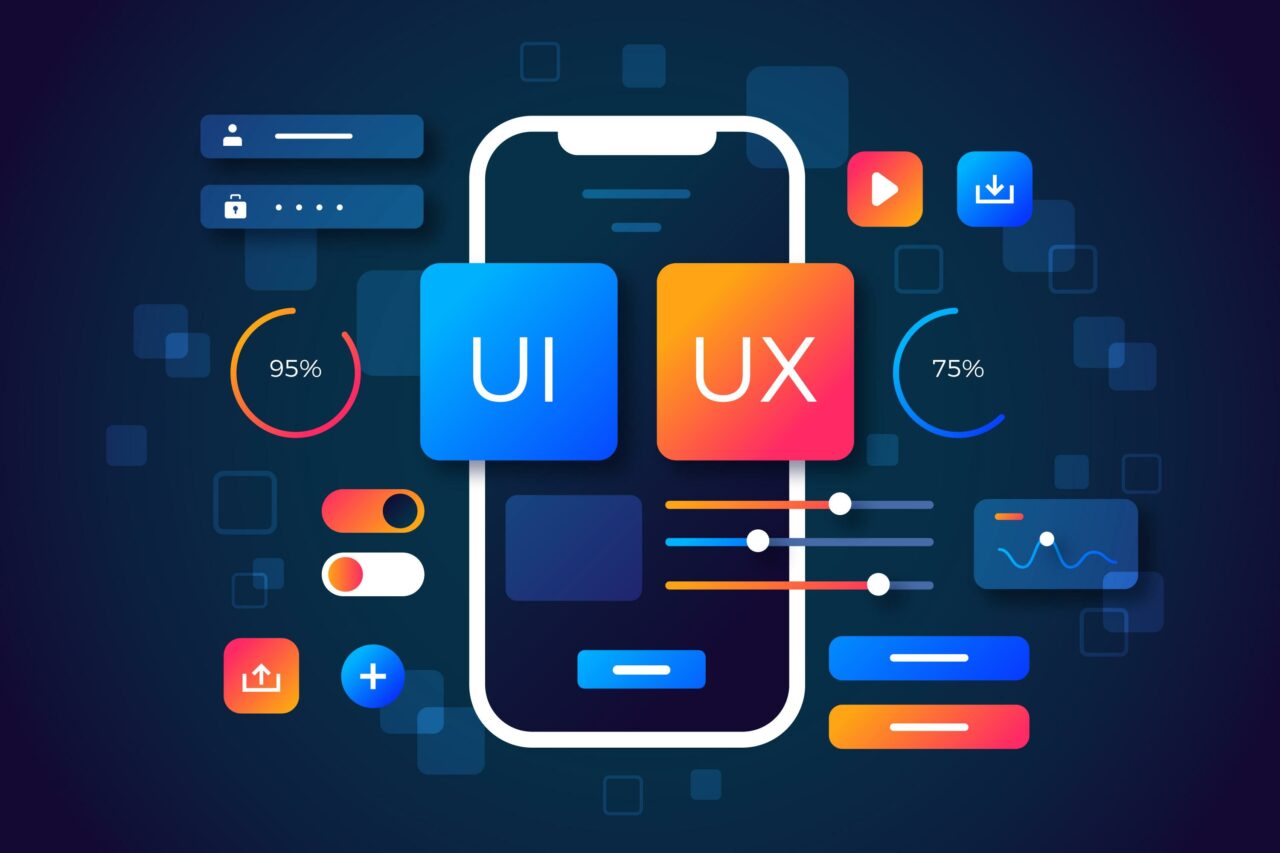UX Design – part 1 – user experience design

When designing UX, the designer must ensure that information is easily accessible and organized in a way that allows the user to quickly find what they need. Like an architect, a UX designer takes many factors into account, including user needs, functionality, aesthetics, as well as budget and execution time.
Close your eyes and see the construction of your dream home in the process. Now imagine that just as an architect designs interiors, a UX designer designs the user interface – to make it intuitive and easy to use.
What is UX Design?
Simply put, UX Design is a design process that aims to minimize user “pain” points and improve the experience when interacting with a product or service. One of the most important aspects of UX Design is to avoid overstimulation, that is, to strive to simplify the interface so that the user can use the product easily and intuitively. To illustrate this idea, the message in the title of the book – “Don’t make me think” – can be used. Simplicity, intuitiveness, clarity will be what a UX designer strives for in their work.
UX Design combines elements of business, strategy, examination and design. UX designers often collaborate with developers, data analysts and experts in various fields (including UX Researcher and UX Copywriter) to create optimal solutions for users. This is the case with projects implemented by Interactive Systems, where UX is an integral part of the design process.
A frequently asked question is the one about the difference between UX design and User Interface (UI).
The UX Designer’s job is to learn as much as possible about the user who will be using the product. What emotions and feelings accompany the user and what problems are caused by the products available on the market. UX is testing, observation and validation. In turn, the UI specialist makes sure that the visual layer does not negatively affect the UX – this includes properly selected colors and proper contrast.
The importance of UX research
In UX, we don’t base design on thinking – research is the key. The data-driven approach in UX design is to use data to make design decisions. This allows us to design solutions that are tailored to users’ needs and behaviors, resulting in a better user experience. The data can come from a variety of sources, including user research, website traffic analysis, A/B benchmarking or competitive analysis.
A data-driven approach requires regular monitoring and analysis of user behavior and continuous testing of solutions to optimize them. There are no products that are 100% finished – the product given to users needs to be observed and improved all the time. It is an iterative process that allows the product to be continuously improved and adapted to users’ needs, which change over time.
One source of knowledge is usability testing and A/B comparison testing. They allow the design to be verified and corrections to be made before the product hits the market. In turn, tools such as Google Analytics, HotJar and GMP help collect and analyze data on user behavior.
Usability testing
The aforementioned UX usability testing is the process of evaluating a product for its usefulness to users. They are conducted to understand how users use the product and what problems they encounter when interacting with it. This allows to identify errors in the interface and make appropriate corrections to provide the best possible user experience.
Usability testing usually consists of several steps, such as:
- Defining test objectives and selecting a group of users to test the product.
- Preparing test scenarios, i.e., tasks that users will have to perform during testing.
- Conducting tests during which users perform tasks according to a scenario.
- Observing users during testing, recording their behavior and collecting information on problems encountered and suggestions for improvements.
- Analysis of test results and development of a report with conclusions and recommendations for user interface improvements.
Testing can be carried out at various stages of a project, from the early prototyping phase to existing products. When conducting tests, it is important to iterate (run the tests many times), because even with a smaller group of subjects, you will get better results if you run the tests several times, after making adjustments each time.
How to better understand a user?
In order to better understand users and their needs and match the product to expectations, UX is based on various models, including: personas, VPC (Value Proposition Canvas), User Flow or User Journey.
VPC is used to design a business strategy and design a product offering that is tailored to the needs and expectations of end users. VPC is an important tool because it helps identify user needs and goals as well as design solutions that address those needs. It consists of two parts: Customer Profile and Value Map.
Customer Profile is an analysis of users, their needs, problems and expectations. UX designers can use various tools for this, including persona or user path mapping. The Value Map, on the other hand, describes the value proposition the company offers to users. This uses techniques such as User Flow and User Journey, by means of which one defines what value the product offers to users and how it should help them achieve their goals. User Flow and User Journey are two key – and complementary – elements in user experience (UX) design, as they allow us to understand how users use a product/service and what users need at each stage of the process.
User Flow and User Journey
User Flow describes the sequence of actions a user takes to achieve their goals. It is a schematic representation of how a user navigates through an application or website, how the user uses various functionalities and what decisions the user makes at each stage. User Flow, on the other hand, helps identify potential barriers that arise in the process of using the product and allows optimization of the user path.
User Journey analyzes a user’s experience with a product or service over time. Describes each user’s encounter with the product, how the user perceives the encounter, the emotions and feelings that accompany the user while using the product/service. User Journey provides an understanding of users’ emotions and impressions when using the product, as well as what elements of the product are important to them and what can be done to increase their engagement and satisfaction.
To summarize: User Flow and User Journey are tools that allow you to create a more complete picture of the user experience.
By using VPC, we can better understand users’ needs and expectations, as well as design products that are tailored to meet their needs and expectations. This in turn translates into a better user experience, increased customer engagement and satisfaction, and business success.
References
- Course and book by Chris Badura – UXUI Design Optimized
- https://digitalx.pl/ux-vs-ui-podobienstwa-i-roznice/?gclid=Cj0KCQjw4NujBhC5ARIsAF4Iv6daJ2qI-KF90b8VYoWgHS02lpeyHgnW4QQ7WXrnZ_PJqH-klQPe9AYaAiXKEALw_wcB
- https://www.uxmatters.com/mt/archives/2020/10/data-driven-design-an-integral-part-of-ux-design.php
- https://www.nngroup.com/articles/user-journeys-vs-user-flows/
Image: Photo by Freepik
Author: Sandra Pietrzak
Junior Project Manager
Sandra has many years of experience in the field of loyalty applications. She uses her skills in UX, which is her professional passion.
Cooperation: Emilia Seweryn
Editorial: Ewa Nowaczyk-Przybylak
Translation: Paweł Kurpisz

Managing Director
+48 728 877 351
k.skocki@interactivesystems.pl
- you will find solutions to your challenges;
- you will learn the mechanisms to activate B2B partners and customers;
- you will get a reliable valuation and implement the loyalty program concept.
Want to find out if you’re getting the most out of your sales support?
Use our performance calculator and see what it looks like for you!



